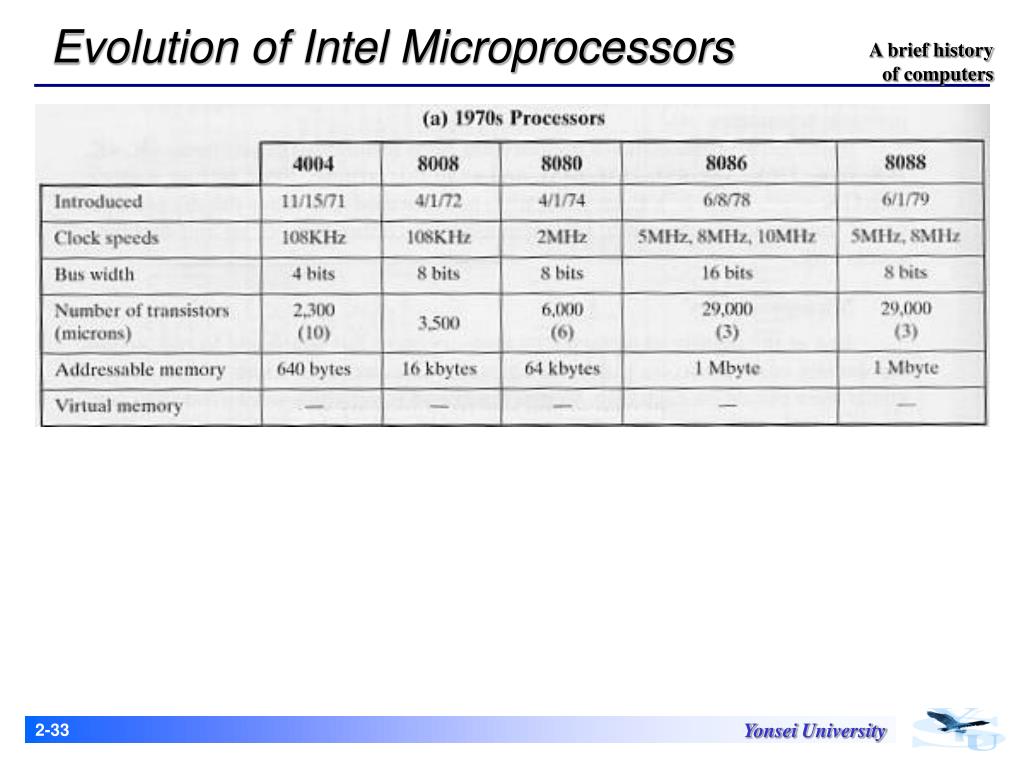A microprocessor (sometimes abbreviated µP) is a digital electronic component with transistors on a single semiconductor integrated circuit (IC). One or more microprocessors typically serve as a central processing unit (CPU) in a computer system or handheld device.

- With the recent arrival of Intel's 4th generation Core i 'Haswell' CPUs, we thought we'd take a look back at the evolution of the consumer based Core i series. It's been quite a journey over the last few years! Series Released Representative CPUs First Supported Clarkdale & Lynnfield.
- May 23, 2018 The 8086, also known as the iAPX 86, was Intel's first commercial 16-bit CPU and is considered to be the chip that launched the era of x86 processors. With 29,000 transistors built in a 3,000 nm.
Microprocessors made possible the advent of the microcomputer. Before this, electronic CPUs were typically made from bulky discrete switching devices (and later small-scale integrated circuits) containing the equivalent of only a few transistors.
By integrating the processor onto one or a very few large-scale integrated circuit packages (containing the equivalent of thousands or millions of discrete transistors), the cost of processor power was greatly reduced. Since the advent of the IC in the mid-1970s, the microprocessor has become the most prevalent implementation of the CPU, nearly completely replacing all other forms.
Various microprocessors |
Evolution Of Intel Pentium Processors

Desktop processors Nehalem microarchitecture (1st generation) 'Lynnfield' (45 nm) All models support: MMX, SSE, SSE2, SSE3, SSSE3, SSE4.1, SSE4.2, Enhanced Intel SpeedStep Technology (EIST), Intel 64, XD bit (an NX bit implementation), Intel VT-x, Turbo Boost, Smart Cache.
The evolution of microprocessors has been known to follow Moore's Law when it comes to steadily increasing performance over the years. This law suggests that the complexity of an integrated circuit, with respect to minimum component cost, doubles every 24 months. This dictum has generally proven true since the early 1970s.
From their humble beginnings as the drivers for calculators, the continued increase in power has led to the dominance of microprocessors over every other form of computer; every system from the largest mainframes to the smallest handheld computers now uses a microprocessor at its core.
Cached
Microprocessors have impacted every type of computer that we use in our daily lives, from students studying for their bachelor degree online the ability do so anywhere at any time, to being able to find your travel destination with a GPS.
Without the introduction of microprocessors the computers we now have in our homes and even the one on your adjustable desk in your office would be vastly inferior to what we are accustomed to today. Simple tasks such as browsing the web and using word processors would be a monumental task.
I9-10900K
History of the Microprocessor
Discuss The Evolution Of Intel Processors
The first microprocessors
Evolution Of Intel Processors Pdf
As with many advances in technology, the microprocessor was an idea whose time had come. Three projects arguably delivered a complete microprocessor at about the same time, Intel's 4004, Texas Instruments' TMS 1000, and Garrett AiResearch's Central Air Data Computer.